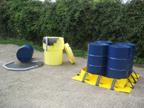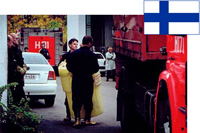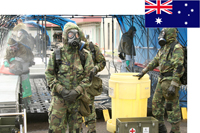Storage Facilities and Safe Practices
OSHA regulations require the storage of like classes of compounds together, away from other compounds with which they might react if their containers leaked or were broken. Color coding of containers for various storage classes is now common practice among chemical manufacturers. Consider the following classes:
Solvents and other flammables: There are two major aspects of safe practice in the storage of solvents: (a) limit the quantity to be stored, and (b) use proper storage equipment.
The proper equipment for storing solvents includes metal safety cans for quantities larger than one gallon, or double-walled metal cabinets approved by the National Fire Prevention Association (NFPA), in which the solvent containers should be kept when not in use. Your local fire code may require vented cabinets.
Hazardous Waste Storage
EPA Regulations
Through the Resource Conservation and Recovery Act (RCRA), Congress directed EPA to regulate all aspects of hazardous waste. As a result, EPA developed strict regulations for the treatment, storage, and disposal of hazardous waste. States may implement stricter requirements than the Federal regulations as needed.
http://www.epa.gov/wastes/hazard/tsd/storage.htm
Pesticide Storage
Learn how EPA regulates industrial chemicals and pesticides:
http://www.epa.gov/gateway/learn/pestchemtox.html
Pocket Guide to Chemical Hazards
The National Institute for Occupational Safety and Health (NIOSH) created a Pocket Guide to Chemical Hazards (NPG) is intended as a source of general industrial hygiene information on several hundred chemicals/classes for workers, employers, and occupational health professionals. The NPG presents key information and data in abbreviated or tabular form for chemicals or substance groupings (e.g. cyanides, fluorides, manganese compounds) that are found in the work environment. The information found in the NPG should help users recognize and control occupational chemical hazards.
General Recommendations for storing hazardous materials
Shelves and racks should have enough clearance to accommodate the largest container that allows it to be removed and returned without tipping. Tipping containers when returning them to shelves, cabinets and refrigerators may cause the contents to drip or leak.
• Limit hazardous materials kept in fume hoods to the amount that is in use or needed for an activity.
• Avoid stockpiling chemicals.
• Conduct periodic cleanouts to minimize accumulating unwanted chemicals.



